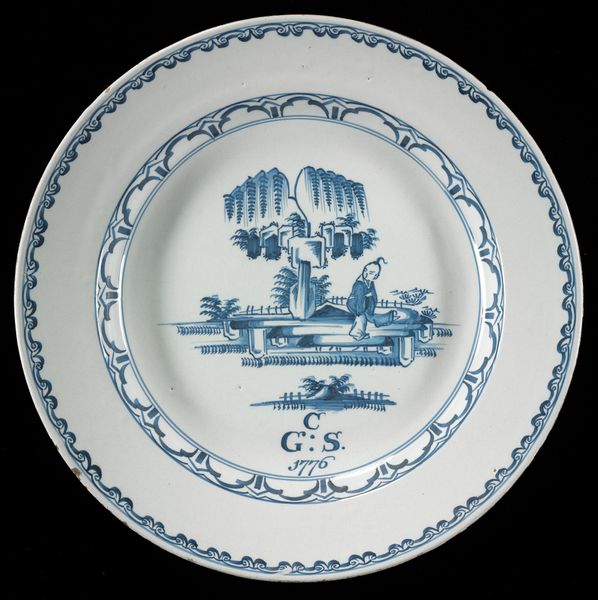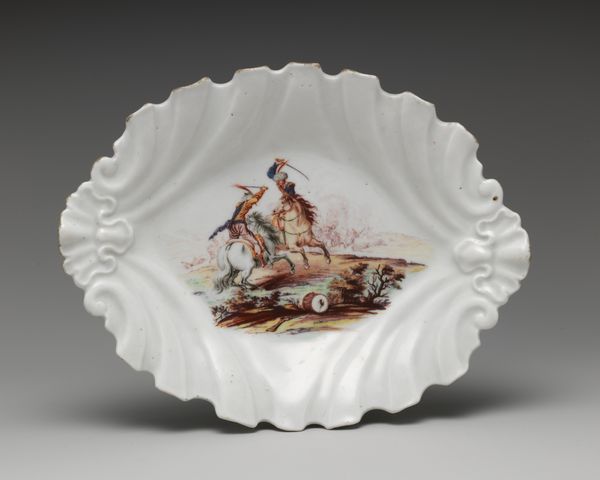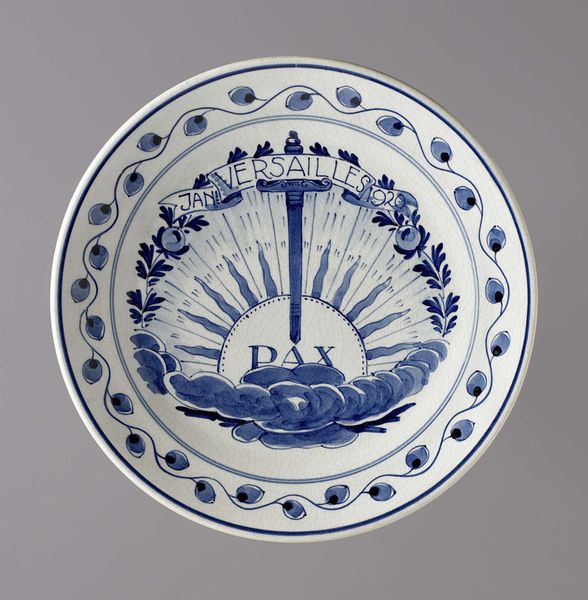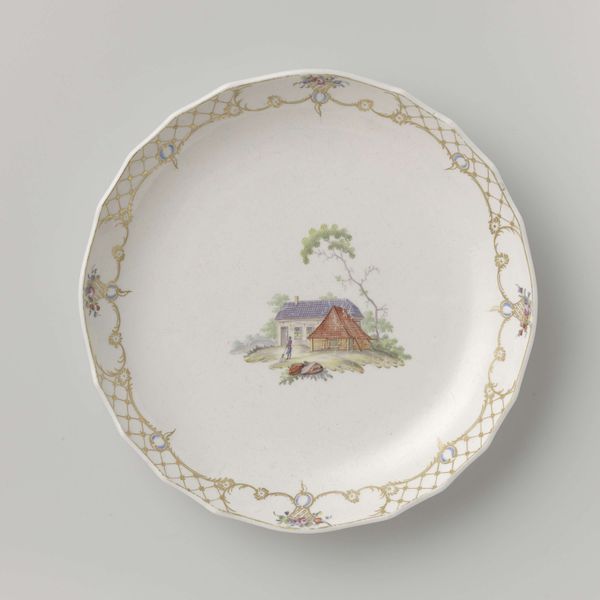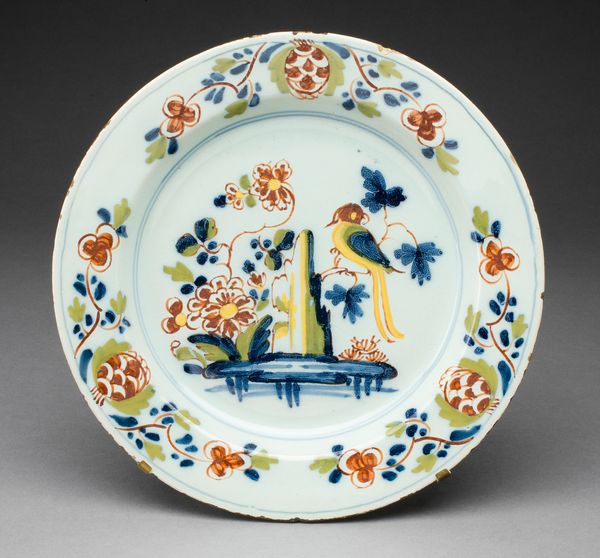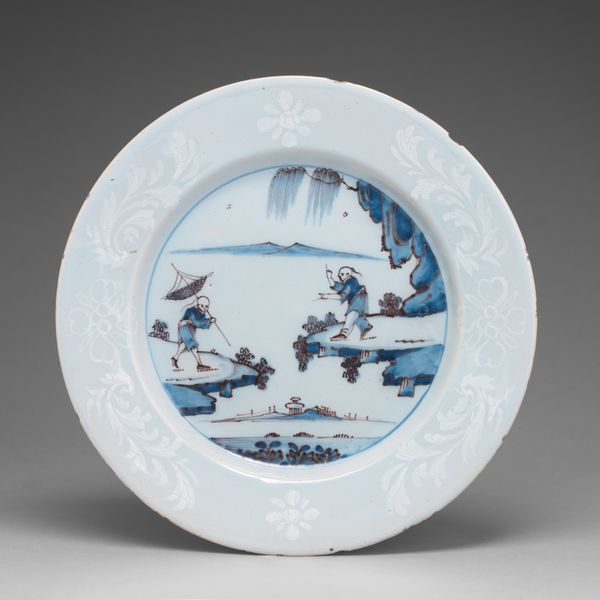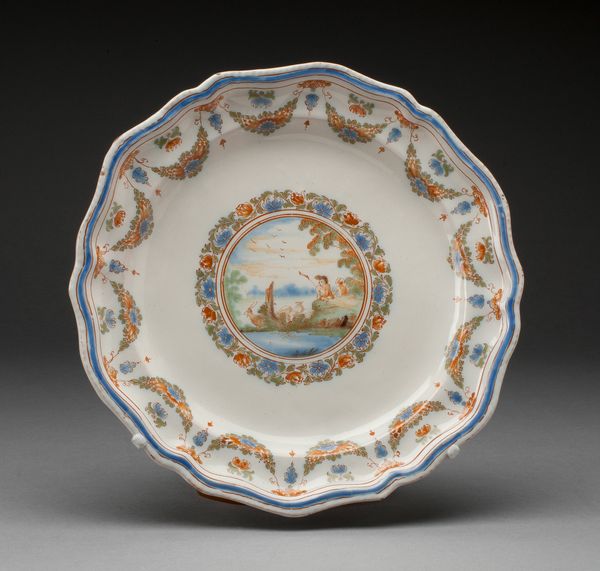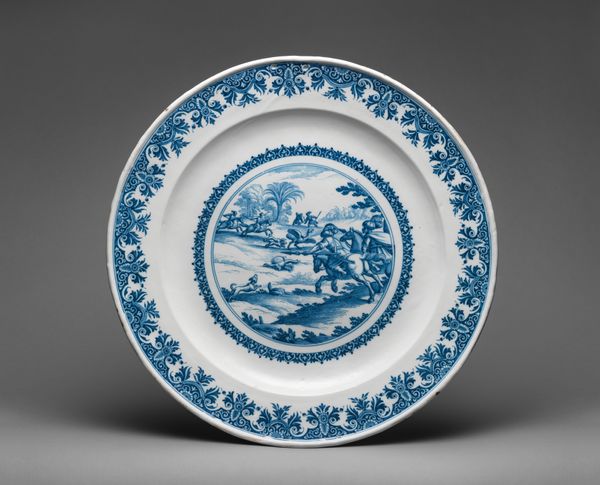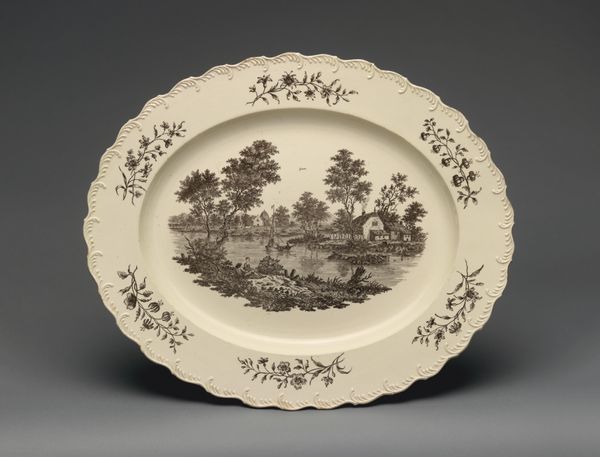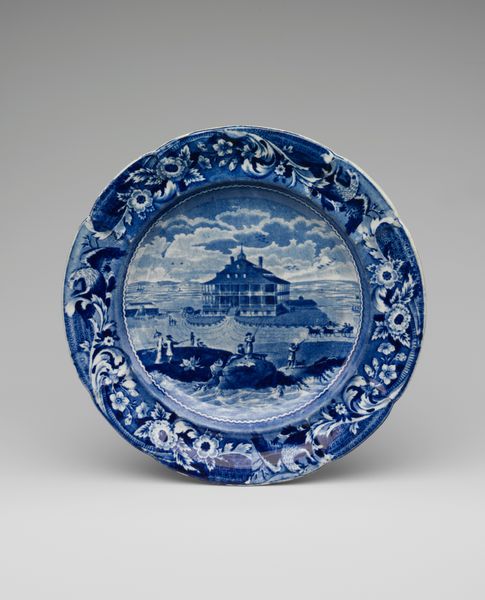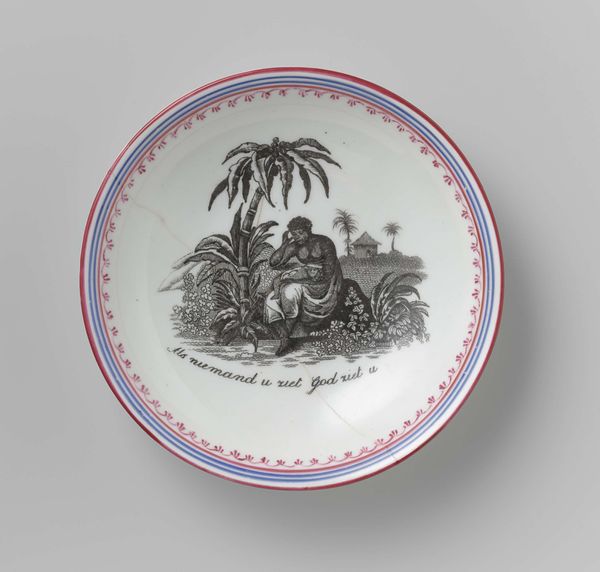
ceramic, earthenware, sculpture
#
landscape
#
ceramic
#
earthenware
#
sculpture
#
decorative-art
#
rococo
Dimensions: Diameter: 8 7/8 in. (22.5 cm)
Copyright: Public Domain
This plate was made by Joseph Flower in the 1700s. The central motif is a scene that blends European and Chinese aesthetics, a common fascination of the era. Note how the landscape evokes a sense of an idealized nature. Water, islands, and architectural details symbolize harmony and tranquility, echoing classical pastoral themes. The depiction of water has ancient roots. In early Mesopotamian art, water symbolized life and purification, a concept that then flowed into Egyptian and Greek art as a signifier of cosmic order. This symbolism has evolved over time, yet its deep psychological association with purity and renewal persists. The arrangement creates a serene and contemplative atmosphere. It invites us to reflect on the relationship between humanity and nature, a recurrent theme in art across cultures. Such imagery resonates deeply because it taps into our collective memories. The emotional power of these archetypes still shapes our subconscious responses to visual art.
Comments
No comments
Be the first to comment and join the conversation on the ultimate creative platform.
